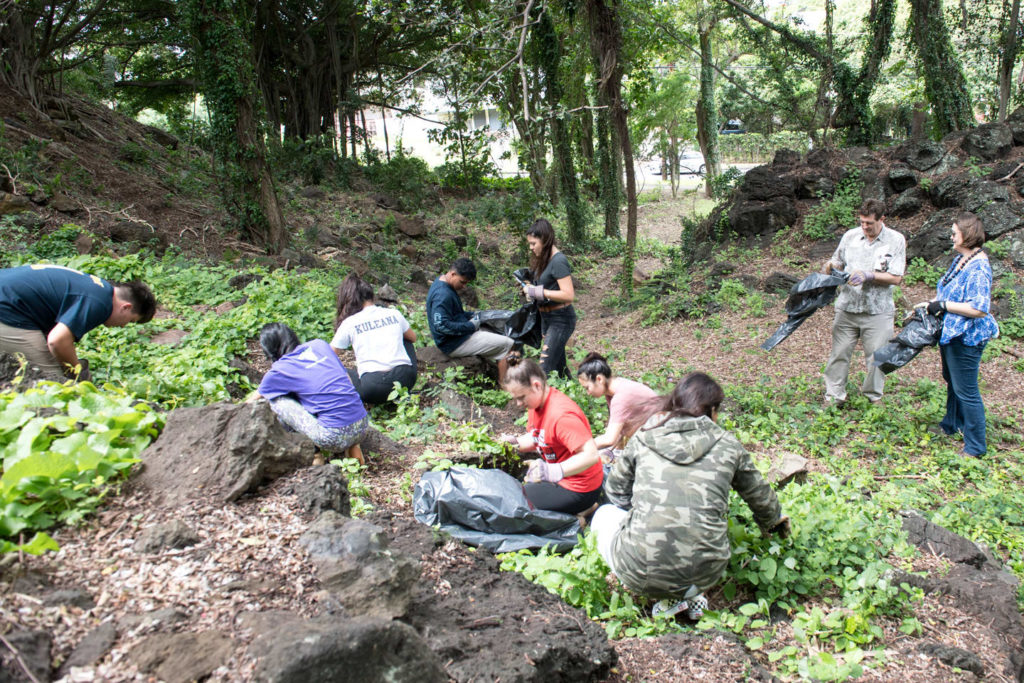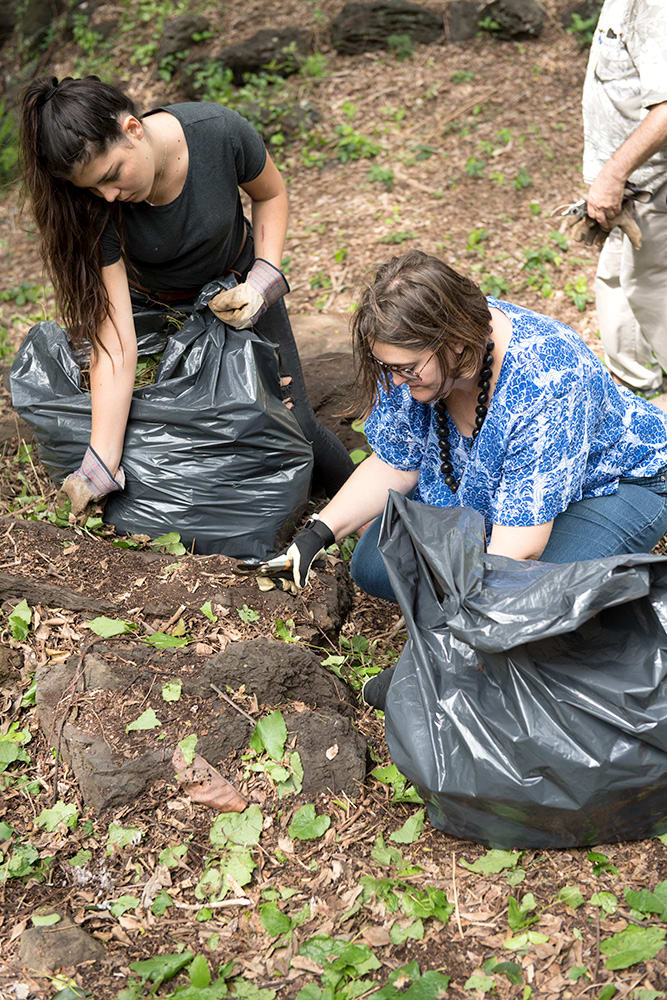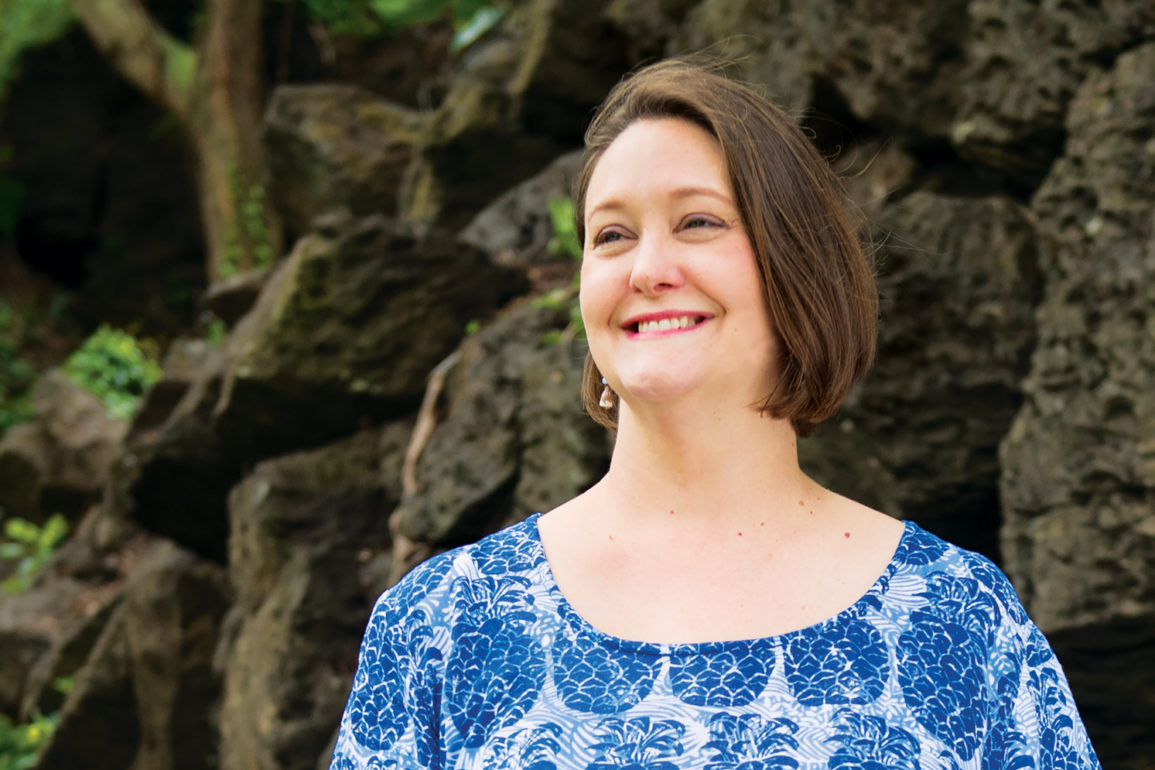By Lavonne Leong ’93
Light the Way
Vanessa Van Gorder ’95 Distajo had a hunch that Kamānele Park, in the College Hills district of Mānoa Valley, was not just another patch of green grass with a swing set on it. Graced by spreading trees, with a distinctive hill on one side, the park was dedicated in 1915 by Queen Lili‘uokalani and Mayor John Lane. Not only was it Honolulu’s first Territorial park, it was the queen’s last public appearance, and Distajo discovered that Mayor Lane had been a Grand Master of the Royal Order of Kamehameha I. “I realized that there must have been something culturally significant about this place,” she says. “[Grand Masters] were tasked with preserving Hawaiian culture.” Because both Lane and Lili‘uokalani had attended the park’s opening, she says, “I knew it wasn’t just any place – it had to be pretty special.”
Distajo is Vice President of the Mānoa Branch of Outdoor Circle, the environmental nonprofit organization that facilitated the 1915 opening of Kamānele park and is spearheading its restoration today. The park was loved by generations of children, but over the years, the playground equipment had rusted and the hillside was overwhelmed by invasive vines. Distajo and her Outdoor Circle mentor, Dr. Jeremy Lam ’63, were inspired to restore it. Ma-lama Mānoa’s Linda LeGrande and Lowell Angell ’65, Mānoa Neighborhood Board Chair Dale Kobayashi ’78, City Council Member Ann Kobayashi, the Mayor’s Commission of Culture and the Arts, and the Department of Parks and Recreation’s Adopt a Park program coordinator, Clint Jamile ’59, jumped in with support, too.

Beneath the vines, volunteers uncovered alcoves, layouts and stone pathways that archaeologists have confirmed are significant to Hawaiian culture. For Distajo, the park’s restoration is an opportunity to provide education and a strong sense of place to the next generation. She envisions a play area for ages 2 – 5 with a taro plant sculpture and a sleeping giant rock for climbing – since there are several preschools within walking distance – and pueo statues tucked into many of the park’s hidden nooks and crannies.
It’s a big job, to which Distajo has already donated hundreds of hours. She credits her drive to make a difference to her Punahou education: “all of this would not have been possible without the Punahou community, and my experiences as a Punahou student.” From Jerry Devlin’s archaeology class to chapel, and the opportunities for leadership along the way, Distajo says Punahou helped her see what was truly important – and taught her how to advance a good cause. Kumu Tai Crouch taught her in ninth grade and has volunteered at Kamānele. “All of these teachers,” says Distajo, “touched my life in a profound way.” Distajo is particularly grateful for a scholarship provided by Dolores Furtado (1928) Martin. When she met Martin in person, she asked her, “How can I repay you?” “Mrs. Martin told me about the Hawaiian concept of kahiau,” says Distajo. “It’s about giving without any expectation of receiving.” Instead, Martin urged her, “Light the way for others.”

It was another Punahou connection who showed her that she didn’t have to wait her turn to make a difference. In high school, Distajo was the District Governor of Interact, a Rotary-sponsored community service club. Knowing that Distajo was looking for a project that would make a difference, Punahou teacher Gail Peiterson introduced her to Brian Schatz ’90, then a recent college graduate. Schatz and Distajo worked together on Honolulu’s award-winning storm drain stenciling project, and the project’s success inspired Distajo.
This spring, Distajo shared her knowledge with Punahou students as part of a G-Term class called “At Your Service: Creating Stories of Community,” facilitated by Dr. Kamal Kapadia, co-director of Luke Center for Public Service. The class worked at Shriner’s Hospital, then moved to Kamānele Park for two different kinds of service learning. With archaeologists from OASES and cultural practitioner Puka Asing there to guide them and provide background and history, students removed invasive plants from Kamānele’s hillside, and delved into history and legends associated with the park’s past.
Distajo says the G-Term class was particularly meaningful because of another part of the park’s history: Kamānele Park was a gift to the city made by Punahou School. She hopes the G-Term students found a better understanding of “the evolution of how we use space over time,” says Distajo. “We might use something differently from the people who came before us, but we still need to honor and respect it. And it’s going to have a future use, too. I want to connect past, present and future, and I think they got a sense of that.”
But for Distajo, who trained as an educator at University of Pennsylvania, restoring Kamānele Park to its true place in Honolulu’s history is not just work – it’s an adventure that has brought together all her skills and passions, from a love of archaeology and “Indiana Jones” movies to her love of reading and stories, which began when she discovered “The Secret Garden” by Frances Hodgson Burnett: “Working on this project, for me, has been like ‘The Secret Garden’ plus ‘Indiana Jones.’ You don’t know what you’re going to recover next!”
See related profiles about Lee Zane ’88 and Jane Beachy ’97

